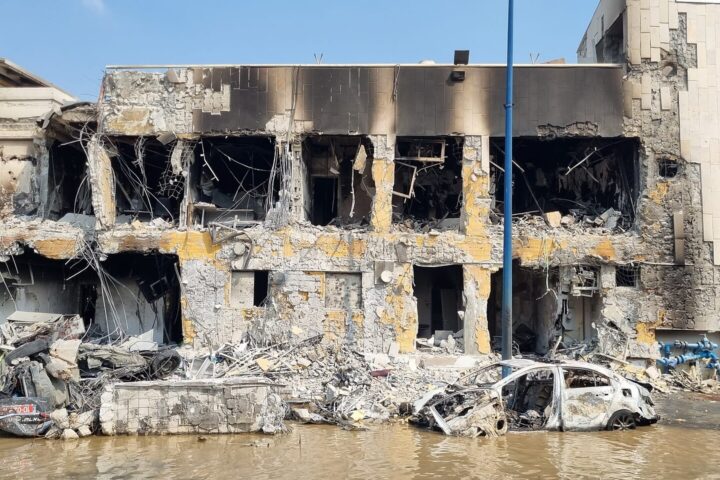.
Since the report on the collapse of the Cooperative Credit System (CRS) came out a few weeks ago, a lot has been said and written, especially about the responsibilities that should be taken by the “culprits” of the recent economic “catastrophe”.
Although it is certainly not easy to create a detailed analysis of an 844-page report in a short article, I will try to document a few of my main thoughts about it:
1. Although the report is structured well and has a lot of useful and detailed information about the path of the CRS from 1985 onwards, in my humble opinion it overemphasizes the period post-2013 with 590 pages devoted to this as opposed to only 156 for the period pre-2013.
This is in contradiction to the widely-accepted argument that the problems did not emanate from the handlings during the post-2013 period, but rather during the many years of abuse of the system pre-2013 by all the stakeholders in the Coop sector (Boards and Management of the Cooperative Credit Institutions (CCIs) appointed by political parties, regulators, governments, and of course the political system).
2. In my mind, the report fails to capture the “big” picture. First, I don’t think the word “catastrophe” is appropriate in this case. If we take a look at all the stakeholders of the bank, I believe that all of them are in a better situation after the deal with the Hellenic Bank.
The depositors are all secured; the problematic borrowers are in a better position now under the Asset Management Company (AMC) that was created to handle NPLs (longer time to service their loans and thus more breathing space); the interests of all employees of the Coop secured; the overall banking sector is more stable with the removal of a large portfolio of NPLs from the system; and finally the economy in general is on an upward trend evidenced by the recent credit rating upgrades by most of the rating agencies to the Investment-Grade sector after a period of six years despite the increase in government debt.
Indeed, there was an increase of €3.5bn in the government debt (for buying a portfolio of assets of more than €8bn in nominal value), but with the right management of the AMC the government can eventually have a positive return from this investment in the long-run. In the above deal, one has to consider also the risks faced by the counterparty, the Hellenic Bank, in taking over an organization with many issues and having to gradually merge the two organizations into one banking unit.
Thus the word “catastrophe” so often used recently by MPs and spokespersons of political parties applies more for 2013, when the taxpayer had to pay €1.8bn to recapitalize Laiki Bank and within a period of less than a year the bank went bankrupt and billions were lost from customers’ deposits.
3. In the 590 pages devoted to the post-2013 period there is extensive documentation of the sequence of events that led to the 2018 decisions, yet nowhere there is an analysis of the competitive landscape that the Coop had to operate. Furthermore, this landscape was not static but very dynamic especially in recent years with the banking union and the increased regulatory requirements imposed by the ECB and the SSM.
Therefore, the restructuring plan that was formulated back in 2013 does not mean that it could not alter given the dynamics of the market. What is important of course is the end result and this is something that is not analyzed enough in the report.
4. The main theme in the report repeated time after time, is that the reasons for the collapse of the system were – excessive increases in operational costs, bad governance, and inability to handle the NPL portfolio in the post-2103 period. Where is the analysis that compares to the other main banks in Cyprus during this time – namely BoC, Hellenic Bank, and Alpha Bank?
Were the other banks much more successful than the Coop? One could argue that they were suffering from the same problems or inefficiencies of the Coop, and their results during the last six years were not much better (which is reflected in the loss of capital of the shareholders). But let’s briefly examine more carefully each of the above mentioned reasons for the collapse of the Coop:
– Excessive increases in operational costs – I do not think that this can be the main reason for the collapse of the Coop. All the banks had to increase their operational costs during this period to bring in expertise to handle a very problematic situation post-2013. This is especially true for the Coop with existing personnel that had literally no banking experience. As the report rightly claims, the conversion of the numerous CCIs into one unit and bank was a giant task that required to bring in urgently expertise from outside which implied increases in operational costs.
– Bad governance – The problem of bad governance is a “Cypriot” phenomenon just because we do not have the right culture but also the relevant “know-how” and expertise. Furthermore, governance is not only about the Board of Directors and the Senior Management but transcends the whole organization and includes all the stakeholders (government, political system, regulators, employees, customers, suppliers, etc.) So I do not think that the Coop, compared to other organizations (whether private but especially public) was much worse in this regard.
– Inability to handle the NPL portfolio – To begin with, the structure of the NPL portfolio of the Coop was much worse than the rest of the commercial banks. It consisted of mainly housing loans or small business loans with the primary residency or commercial property as the collateral. Given the decisions taken by the MPs regarding the protection of the primary residency or commercial property, not a lot could be done for such loans and thus they did not have much value.
One tool that was used by other banks to reduce the NPL portfolio – the Debt-to-Asset swap – for their big commercial customers was not really applicable for the Coop case.
Furthermore, one could argue that the Debt-to-Asset swap does not really solve the problem as the banks are left with a huge portfolio of real estate assets on their balance sheet which implies that they will need to find ways to handle such a huge asset (i.e. in essence become a real estate company). A detailed analysis in the report of the handling of NPLs in comparison to other banks could have been very informative.
5. Another theme across the report is the loss of capital that the owner (government) has suffered – around €1.7bn in total. My first argument is that the original estimate was done by PIMCO back in 2012 (for the Coop as well as the other banks) and in the process it proved that the capital estimated at that time was not enough for all banks, not just the Coop.
As an example, if we take the case of BoC, the bank recapitalized in 2013 by the money from the uninsured depositors and then again in 2014 (with extra €1bn of capital from foreign investors) and by now even the new shareholders suffer a 70% reduction of their investment (let alone the uninsured depositors that were diluted back in 2014)! The inability to show profitability and consequently the loss of capital is unfortunately an indication of the difficult conditions that our banks had to face post-2013.
Concluding with some general comments – a common theme across the report is the incompetence of the Board of Directors and the Senior Management. These are people that took the huge risk of handling a very difficult situation back in 2013, and I am certain that they had the best intentions for the Coop. Mistakes have certainly been made, some things obviously could have been handled better, but in any case the outcome, given the circumstances, is not that awful as is portrayed.







